Music projects
last updated: 2025-06-17
I can't guaranty a faultless project, so using the information is at one's own risk.
|
|
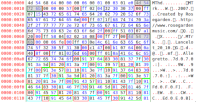 |
In my DRUMPPY software I want to save the patterns as MIDI files. So better to understand MIDI files. I already did some bytewise analysing back in 2008 and documented it in German. On this page I will reuse this knowledge but also the cool MIDO Python library that facilitates the analysing. |
|
|
| The SAM2695 includes a complete GM-wavetable (38-64 voice polyphony) synthesizer and different effects. While experimenting with my DRUMPPY software I wanted a little Synth near my computer with speakers and perhaps a battery and USB to reduce cable mess. I still had two old speakers from a radio (60 mm diameter, 6 Ω ) and a spare battery (10000 mAh). I could use a Teensy to get USB to MIDI, but wanted to try the Pi pico chip. More about this on a separate page: https://www.weigu.lu/music/midi_usb_pi_pico/index.html. |
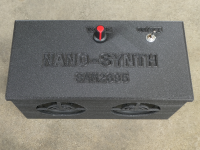 |
|
|
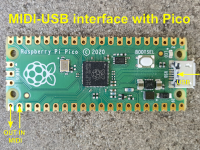 |
MIDI-USB interface. The MIDI data is passed from the computer via MIDI USB to an Raspberry PI Pico that mirrors it to a serial port. The serial data can be passed to a MIDI synth. |
|
|
| The MIDIbox Operating System (MIOS) has been developed by Thorsten Klose (starting 1998!) for the requirements of flexible MIDI applications like MIDI controllers, processors, synthesizers, sequencers. Look here: http://www.ucapps.de/mios.html. I own an older STM32F1 MBHP board that was replaced in my sequencer with a newer STM32F4. The board has 2 Midi In and 2 Midi Our channels and USB, so I use it as a 2x2 USB MIDI interface (with integrated MIDI monitor). Thorstens PC Software Studio 2 helps to debug and hack Midi SYSEX commands :). |
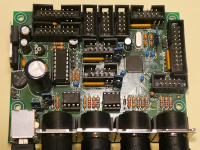 |
|
|
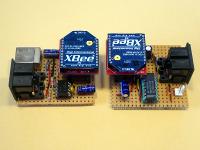 |
I wanted to use Midi over the air and found this interesting page on adafruit: https://learn.adafruit.com/xbee-radios/midi-link.
With a handful of components, no need to draw a layout. The circuits are mounted on breadboards.
After reprogramming the XBEE modules, MIDI ota is ready :) |
|
|
This is an absolute minimal Midi monitor, using a Teensy 3.6 from pjrc and an OLED display SSD1351 from adafruit.
Thanks to the Teensy midi library the software is a piece of cake. |
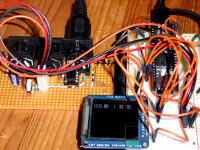 |
Archived Projects: No Longer Maintained
|
|
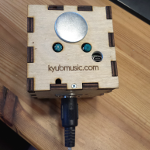 |
The Kyub is a special MIDI keyboard in the shape of a cube with capacitive sensing and an internal accelerometer based on a Teensy 2.0. Kyubmusic.com does not exist anymore, but some infos are on hackaday.io. Here you find hacks to power the Kyub over MIDI and to connect the Kyub direct to a synth. The software was reprogrammed in assembler. |







